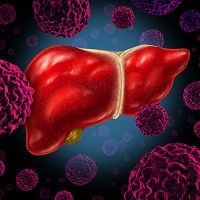Article
Liver Cancer Risks Not Affected by Hepatitis C Eliminating Therapy
Author(s):
Yuko Nagaoki and colleagues at Hiroshima University compared the occurrence of hepatocellular carcinoma in HCV patients cured with direct acting antivirals and those given interferon therapy.

Hepatitis C virus (HCV) patients faced a similar risk of developing liver cancer whether they eradicated the virus with direct-acting antiviral (DAA) drugs or interferon therapy, researchers in Japan found.
Yuko Nagaoki and colleagues at Hiroshima University compared the occurrence of hepatocellular carcinoma (HCC) in HCV patients cured with DAAs and those given pegylated interferon with ribavirin (PEG-IFN/RBV). Treating chronic HCV is important because the virus is a leading cause of cirrhosis, liver failure and HCC.
“The goal of chronic HCV infection treatment is eradication of the virus in order to prevent HCC development,” Nagaoki, an assistant professor at , and her team wrote in a paper regarding the study.
Japan approved Bristol-Myers Squibb’s daclatasvir (Daklinza) and asunaprevir (Sunvepra) for genotype 1 HCV in 2014. About 95% of patients attained sustained virologic response (SVR) in real-world studies with the interferon-free DCV/ASV DAA treatment, previous research has shown.
However, it was unknown whether this regimen would reduce a patient’s risk of developing HCC to the same extent as treatment with PEG-IFN/RBV, the researchers said.
To investigate, the team assessed 398 HCV genotype 1 patients. All were treated at Hiroshima University Hospital and attained SVR from January 1995 to April 2015. Individuals who’d previously undergone HCV treatment or who had a history of HCC were excluded from the analysis.
There were 154 patients in the interferon-free DCV/ASV group and 244 individuals in the PEG-IFN/RBV group. The DAA patients had a median age of 73, versus 59 for the interferon patients, and were mainly female (62.3% versus 52.2%). This group also had more complicating factors, including greater levels of diabetes, alcohol intake and hypertension. To overcome these covariates, one-to-one matches were created using propensity score analysis, the authors said.
All patients were tracked for HCC at least biannually after the virus was eradicated.
HCC was seen in 13 of the 244 (5.3%) PEG-IFN/RBV group members and 7 of the 154 (4.5%) individuals given DCV/ASV.
The cumulative rates of HCC development at 1, 3 and 5 years were 0.4%, 3% and 5% for the PEG-IFN/RBV patients and 0.6%, 9% and 9% for the DCV/ASV group, respectively. Propensity score matching analysis showed similar rates of HCC development in the two groups, the researchers said.
“In the present study, HCC development risk was similar between the PEG-IFN/RBV and the DCV/ASV groups in both patients with and without advanced liver fibrosis,” the researchers wrote.
The researchers noted that a previous study had found that DAAs did not reduce the risk of HCC occurrence in patients with cirrhosis.
“It is possible that HCV eradication by DAA therapy could enhance HCC development or recurrence in patients who have elevated risk for HCC,” they wrote. “However, the present study showed no evidence for an increase in HCC development following achievement of HCV eradication by DAA therapy.”
The team said further analysis is needed to clarify the relationship between liver fibrosis and the risk of developing HCC after HCV is cleared with DAA drugs. They also suggested large-scale, long-term follow-ups to study patients treated with other direct-acting antiviral regimens.
The study, "The risks of hepatocellular carcinoma development after HCV eradication are similar between patients treated with peg-interferon plus ribavirin and direct-acting antiviral therapy," was published online in the journal PLOS this month.
Related Coverage
Baby Boomers Increase HCV Screenings, Treatment When Alert Added to Health Records
FDA Committee to Review Safety of Hydrocodone, Codeine for Children
Viral Hepatitis Up to 10 Times More Likely in Indigenous Populations





